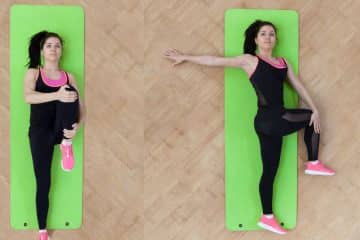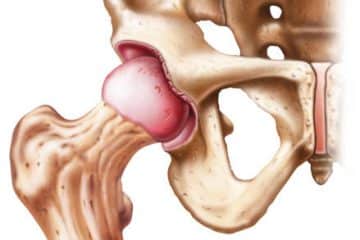Discectomy Cost | Technique | Indications
Lumbar disc herniation is a prevalent condition that has a high healthcare cost. Patients suffering from lower back pain and other associated symptoms can receive therapy from a wide range of multidisciplinary coworkers.

As a result, a broad understanding of the signs and symptoms, diagnostic assessment of the patient, and management choices is essential for delivering effective therapy to patients with this disease.
A discectomy is an option that team members should be knowledgeable of for patients who fail to respond to non-surgical treatment.
Improving health professionals’ understanding of how to diagnose and manage lumbar herniation quickly, especially patients that are resistant to non-surgical therapy, will improve health satisfaction.
What is Discectomy?
The surgery is the surgical resection of a portion or all of a vertebral disc is known.
Degenerated, ruptured (herniated, swollen, or slipping), or damaged vertebral disc are treated with a discectomy. Vertebral discs are cushions that support your vertebrae and are placed in between vertebrae.
A disc herniation can put pressure on the spinal cord or the nerve roots that branch off from it. A disc herniation can cause nerve impingement and irritation, which can be relieved with this procedure.
Types of Discectomy
The types of discectomy procedures include:
• Cervical discectomy is the resection of a vertebral disc in the cervical spines.
• Lumbar discectomy is the resection of a vertebral disc in the lumbar spines.
• Thoracic discectomy is the resection of a vertebral disc in the thoracic spines (middle part of the vertebral column).
• Sacral discectomy is the resection of a vertebral disc in the sacral spines (the lowermost area of the back).
Indications of Discectomy
The diseases, acute and chronic, that warrant the surgery:
• Cauda equina syndrome is a surgical emergency caused by compression of spinal nerve roots leading to severe motor and sensory loss.
• Progressive motor deficit that affects daily activities
• Unresolving symptoms of imaging modalities diagnosed nerve roots compression with conservative management
• Revision surgery if herniated disc recurs
Contraindications of Discectomy
The following are the two cases that are incompatible with surgery:
• Extensive spinal stenosis
• Rare cases with a fully bulged disc
How Discectomy is Done?
The anesthesiologist will provide you with a medication that renders you asleep. The steps of the surgery are shown in the following order:
• Preparation and Positioning of the Patient
Anesthesia will be administered to you while you are lying in the supine position (on your back). Once you’ve fallen asleep, you’ll be turned onto your tummy, with cushions supporting your chest and sides. Clean and prepare the region where the cut will be performed.
• Making the Incision
A skin cut is created down the center of your back and over the damaged vertebra in an open discectomy. Two to five centimeters is the usual length of the incision. On one side, the back muscles are pulled to reveal the skeletal backbone.
To ensure that the proper vertebra is being treated, an X-ray is done. The surgeon uses a special X-ray to detect the damaged vertebral bone and disc by passing a small needle through the skin and straight to the bone.
• Resection of Damaged Disc Fragments
After performing laminotomy (removal of lamina), the doctor carefully pulls back the spinal root’s protective envelope. To identify the bulging disc, the doctor uses a minimally invasive microscope. To relieve the spinal nerve roots, only the damaged part of the disc is resected. Bone spurs that may be pressing on the nerve root are excised as well.
• Closing the wound
After the withdrawal of all surgical instruments, Stitches or staples are used to repair the muscle and skin wounds. Skin glue is used to seal the wound.
Risks of Discectomy
There are a few postoperative complications that include:
• Cerebral fluid leak
• Nerve root injury
• Bowel/bladder dysfunction
• hemorrhage
• Infection
• Postoperative pneumonia is caused by the accumulation of fluid in the lung
• Deep vein thrombosis, which occurs when blood clots form in the veins of the leg
• Persistent pain after surgery
How Long Does Discectomy Last?
The procedure is usually done by experienced surgeons who are specialized in spinal surgery. The procedure usually takes 1 to 2 hours on average to be completely done. With postoperative hospital stay for 1 to 2 days under observation.
Cost of Discectomy
The average cost of operation ranges between 20,000$ and 50,000$ with medical insurance covering a part of the cost of the indicated surgery.
References
https://emedicine.medscape.com/article/1999923
https://www.ncbi.nlm.nih.gov/books/NBK544281/
https://www.uofmhealth.org/health-library/hw218424
See Also
Car Accident Injuries When Filing For Compensation

Dr.Sharif Samir Alijla, is a general medical doctor and a well-rounded professional that cares and treats patients from Palestine. I participated in many medical studies and conferences, I've launched a range of community initiatives and taken part in a variety of leadership and change training programs. I worked as an author for many medical websites such as TebFact . I specialized in writing medical articles from authoritative and updated sources in a simple and smooth the way for the reader.



